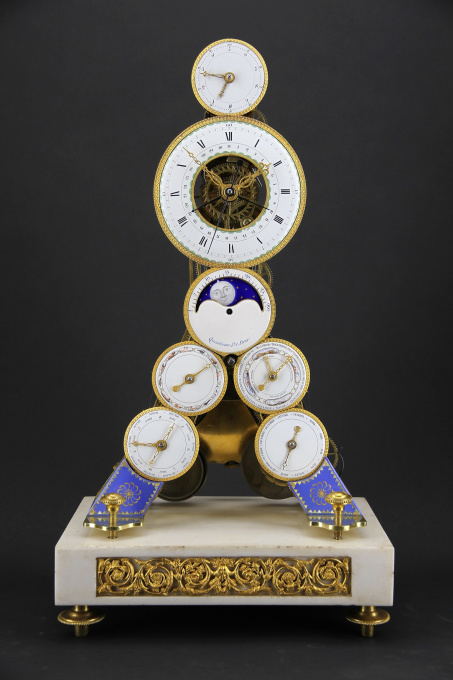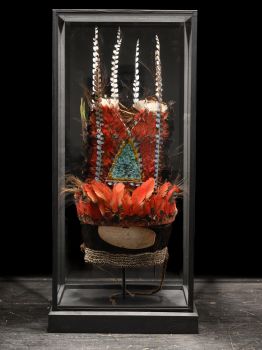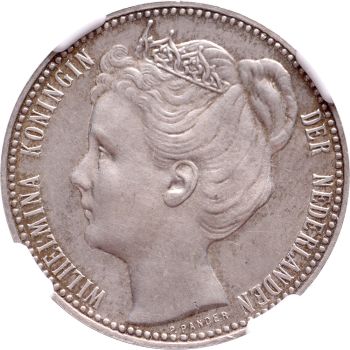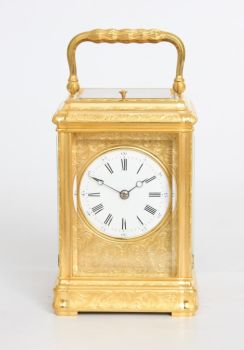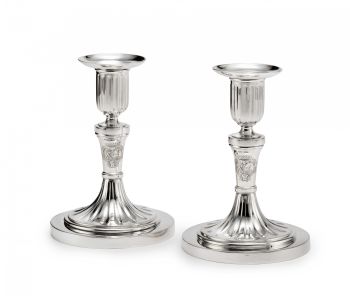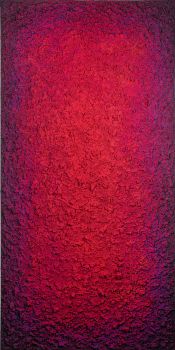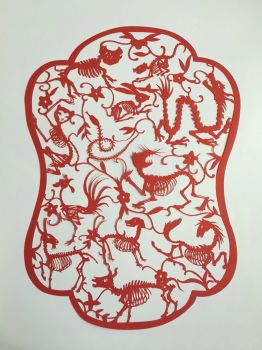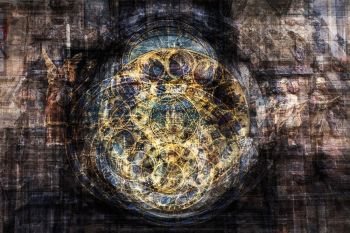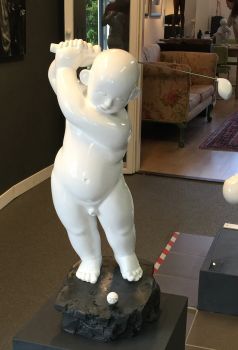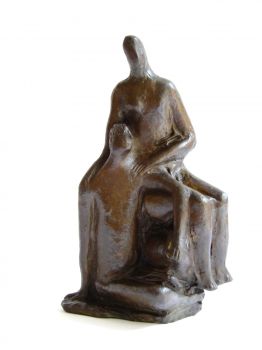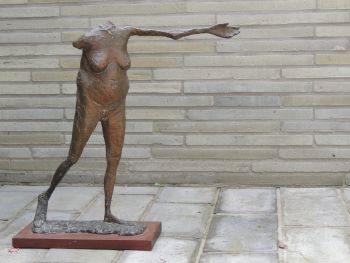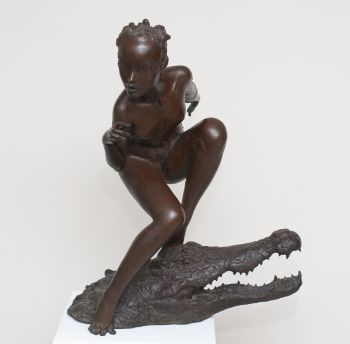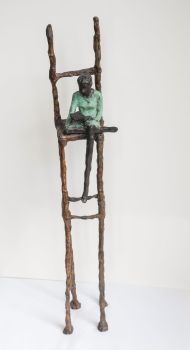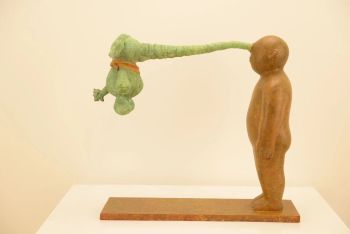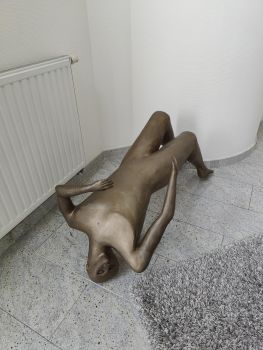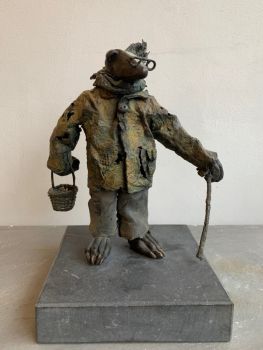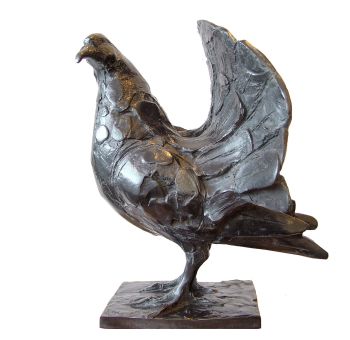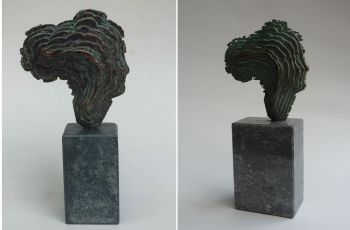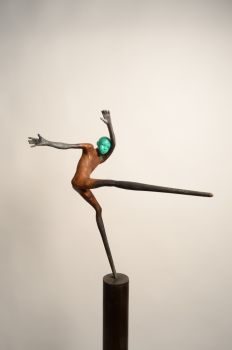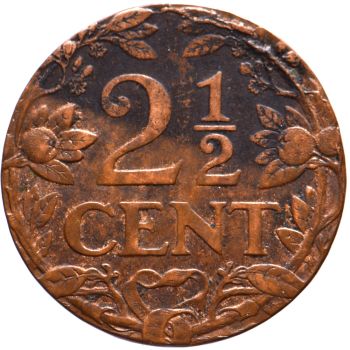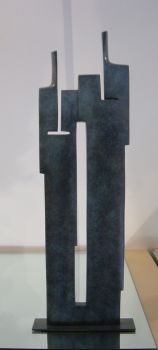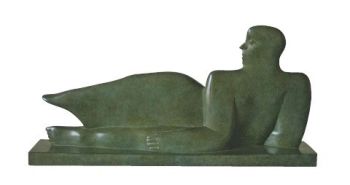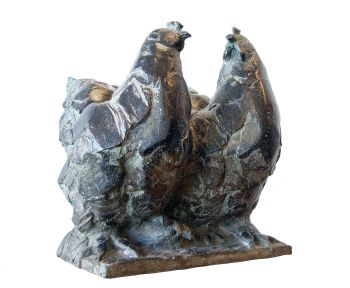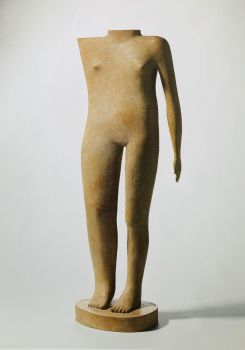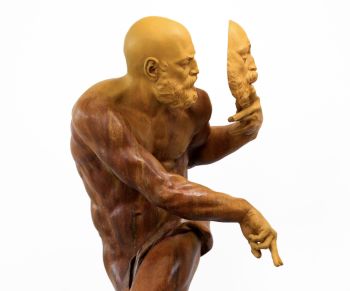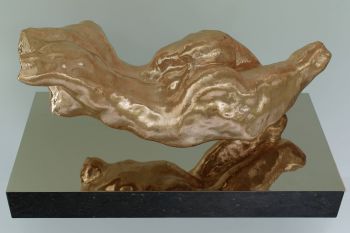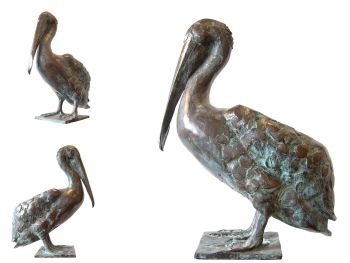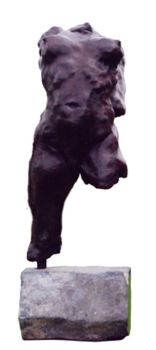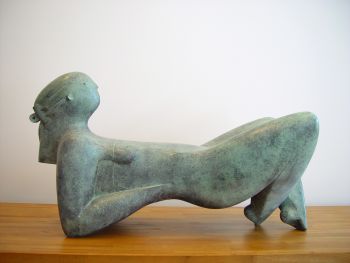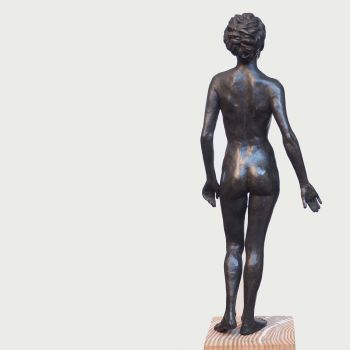French Revolutionary Skeleton Clock with Dual Time Display 1793
Artista Sconosciuto
MarmoPietraBronzoOroMetallomarmo biancoSmaltoDorato
49 ⨯ 27 ⨯ 17 cm
Attualmente non disponibile tramite Gallerease
- A proposito di opere d'arteA skeleton clock (pendule squelette) with 7 dials and 15 indications, signed: “Baudin”. The upper dial indicates the hour of the day in decimal time (10 hours per natural day). The large dial indicates duodecimal (conventional) time and two extra hands that respectively indicate the date in the Gregorian and the Republican calender. The lower central dial shows the phases of the moon calendar (Quantième De Lune) and the days in the moon calendar (29.5 days)
Beneath the three central dials, there are four more dials that respectively indicate:
Upper left: Zodiac with the respective constellations
Lower left: the outer ring indicates the day of the Republican décade, the inner ring indicates the day of the Gregorian week and its corresponding planet.
Upper right: the months and seasons of the Republican calender
Lower right: the months of the Gregorian calender.
The clockwork has a going train with pin wheel escapement and central seconds indication. The half-second grid pendulum has spring suspension. To level the mechanism there are set screws in each of the four legs.
The striking train for the quarter hours is located in the left leg and strikes on two bells (b1 & b2) In the right leg there is a striking train for the hours (b3).
The quarter hour striking train strikes once at 15 minutes (b1), twice at 30 minutes (b1-b2) and three times at 45 minutes (b1-b2-b1). At the hour it strikes 4 times (b1-b2-b1-b2) and subsequently the hour at b3
The left striking train drives the hands of the two lower left dials, the right striking train drives the hands of the right dials. The left winding mechanism is wound clockwise, the right mechanism is wound counter clockwise. The windlasses of the respective springs are hidden behind the blue enamelled cover plates. The date and moondate are driven by the going train.
The Revolutionary calender
The calender had 12 months of equally 30 days. The months were divided into three periods or décades of ten days. Every year starts on the autumnal equinox (when the sun is exactly of the equator). The days left to make a full year after the twelve months, were called jours supplémentaires or sanculotides. These were the day of virtue, the day of genius, the day of labour, the day of opinion, and the day of recompense. In leap years (les années sextiles) the day of the revolution was added to this range. The period of four years that ended with the day of the revolution was called a Franciade.
The poet Fabré d’Églantine was commissioned to devise new names for the months and days. months of the fall; vendémiaire, brûmaire, frimaire; months of winter; nivôse, pluviôse, nivôse; months of spring; germinal, floreal, priairial; months of summer; messidor, thermidor, fructidor.
The days of the décades were called: primedi, duodi, tridi, quartidi, quintidi, sextidi, septidi, octidi, nonidi, and décadi. Every day of the year also got its own name to replace the Catholic saints days. It was decided that days were given names of fruits, vegetables, animals, tools etcetera. The quintidis should get the name of an animal, the décadis were to be given the name of agricultural implements. - A proposito di opere artista
Può succedere che un artista o un creatore sia sconosciuto.
Alcune opere non sono determinate da chi sono state realizzate o sono state realizzate da (un gruppo di) artigiani. Esempi sono statue dell'antichità, mobili, specchi o firme non chiare o leggibili ma anche alcune opere non sono affatto firmate.
Inoltre puoi trovare la seguente descrizione:
•"Attribuito a …." A loro avviso probabilmente opera dell'artista, almeno in parte
•“Studio di ….” o “Officina di” A loro avviso un'opera eseguita nello studio o nella bottega dell'artista, eventualmente sotto la sua supervisione
•“Cerchio di…” A loro avviso un'opera del periodo dell'artista che mostra la sua influenza, strettamente legata all'artista ma non necessariamente al suo allievo
•"Stile di..." o "Seguace di..." A loro avviso un'opera eseguita nello stile dell'artista ma non necessariamente da un allievo; può essere contemporaneo o quasi contemporaneo
•“Modalità di…” A loro avviso un'opera nello stile dell'artista ma di epoca successiva
•"Dopo …." A loro avviso una copia (di qualsiasi data) di un'opera dell'artista
•“Firmato…”, “Datato…” o “Iscritto” A loro avviso l'opera è stata firmata/datata/inscritta dall'artista. L'aggiunta di un punto interrogativo indica un elemento di dubbio
•"Con firma....", "Con data...", "Con iscrizione..." o “Riporta firma/data/iscrizione” a loro avviso la firma/data/iscrizione è stata aggiunta da qualcuno diverso dall'artista
Artwork details
Related artworks
Artista Sconosciuto
Braccialetto di diamanti del XVIII secolo con intagli di 2000 anni1790
€ 23.000Adin Fine Antique Jewellery
 A cura di
A cura diDanny Bree
1 - 4 / 12Johannes Schiotling
Un paio di candelieri olandesi in argento1784
Prezzo su richiestaJacob J. Roosjen SRI
Reynier de Haan
Un'elegante coppa Monteith in argento olandese Luigi XVI1778
Prezzo su richiestaJacob J. Roosjen SRI
Johannes La (le) Blanck
Un set di ampolle d'argento olandese a doppio uso1786
Prezzo su richiestaJacob J. Roosjen SRI
1 - 4 / 7Artista Sconosciuto
UN PICCOLO NETSUKE IN AVORIO DI UN OLANDESE CON UN TAMBURO1750 - 1800
Prezzo su richiestaZebregs & Röell - Fine Art - Antiques
Artista Sconosciuto
UN NETSUKE IN AVORIO DI UN OLANDESE CHE TIENE UN GALLETTO18th century
Prezzo su richiestaZebregs & Röell - Fine Art - Antiques
Artista Sconosciuto
COPPIA DI TORCHÈRE O PORTACANDELE IN TEAK INDONESI LACCATI E DORATI18th century
Prezzo su richiestaZebregs & Röell - Fine Art - Antiques
1 - 4 / 24- 1 - 4 / 7
- 1 - 4 / 24

